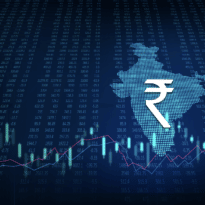Feeding Asia will involve high-tech solutions, says David Smith, senior investment director, abrdn
The future of food and agriculture is a hot topic in Asia, where the question of how to feed a burgeoning population will become more critical with each passing year.
The region’s population is expected to grow from 4.7bn to a peak of 5.3bn by 2055, then take another 50 years to fall back to today’s levels[i]. Meat consumption is on the rise as consumers become more affluent, but agricultural production is only increasing very slowly and may not be able to keep pace. In 2021, 1.1bn people in Asia were not adequately fed, as food inflation came close to all-time highs[ii]. In India and Pakistan, an estimated 15-25% of the population is undernourished[iii] and climate change is likely to make this situation worse. There’s no one answer to this challenge – feeding a growing region means addressing the way that protein is consumed, enhancing agriculture to increase yields, and reducing food waste.
One solution involves the creation of ‘lab-grown’ meat and meat substitutes, including plant-based protein. Globally, funding for this kind of ‘food-tech’ has soared, with companies such as Eat Just, Impossible Burger and Shiok Meats offering the hope that lab-grown food will feed people while lowering land usage and reducing water consumption, as well as increasing food’s nutritional content and hopefully also tasting good.
In Singapore, many possible ‘food-tech’ solutions are being investigated, as the city-state has very little land available for agriculture and currently imports 90% of its food, but it has ambitions to become more self-reliant, with a government-led ‘30by30’ strategy, which aims to have 30% of the country’s food homegrown by 2030[iv]. As a result, city-based farming systems – vertical farming and rooftop farming – plus synthetic protein may all play a big future role. Singapore has approved the commercialisation of lab-cultivated chicken, where the muscle meat is grown from an egg, feather, or biopsy. You can already buy fast-food chicken in Singapore that was grown in a bioreactor.
Meat alternatives
There is much in development, with intellectual property filings for plant-based meat, along with companies developing vertical farming systems, bio alternatives to pesticides, the genetic modification of seeds and farm automation. Much of the work being done in this space is at an early stage, and so is more appropriate for private, venture capital investments rather than public market equities. Many of the alternative-meat products are viable, but are not yet able to be produced at scale, or at a price that is consumer friendly. However, it’s an exciting space, and we are monitoring developments closely. At present, most of the companies doing this work are US-based, but there’s no doubt about the size of the market and opportunity for the products in Asia.
Whilst many of these developments are new, there are a few existing examples, such as an alternative-dairy company with a very long history. The soy milk producer Vitasoy began in Hong Kong in 1940 when Dr Lo Kwee-seong wanted to help Chinese refugees who were malnourished and lactose intolerant. Soy-based food has a long tradition in China where it is known as ‘the meat without bones’, so the move to plant-based alternatives and lab-grown meat may well be more readily accepted.
Precision agriculture
Away from meat alternatives, one big agriculture theme in Europe and the US, which will come to Asia eventually, is precision agriculture, with high-tech ‘smart’ tractors and farm machinery, which can act on information from satellites. But although this holds promise, for most Asian countries what’s needed now is not high tech, but the investment that will enable farming and agriculture to feed a growing region. There’s still a major need for better equipment, better irrigation, better farming techniques, better seed and fertiliser quality, and more robust supply chains.
Once food has been grown (or created in the lab) another big trend is around the delivery to customers. Delivery services have become big business in China, where people want modern convenience and Covid lockdowns have meant populations have to stay at home rather than going out to eat or shop. The companies dominating this very competitive market include: Meituan Dianping and Ele.me.
As an estimated one third of the world’s food is thrown away, it is also worth mentioning the important developments around better methods of food storage and preservation. Companies with improved processing, flash freezing and pasteurisation methods all have a role to play here.
Big problems such as feeding the future population of Asia will require big and bold solutions, so this is a very interesting and innovative space to be watching as the investable opportunities develop.
[i] Population stats: https://statisticstimes.com/demographics/asia-population.php#:~:text=Population%20of%20Asia&text=Asia%20is%20the%20most%20populous,percent%20of%20the%20world%20population.
[ii] Feeding stats: https://www.ft.com/content/02fa9c19-ab64-4311-aeb2-39e2b50dd3d0
Food inflation in Asia, where more than 1.1bn people lacked access to adequate food last year, is hovering near its all-time high and not expected to ease any time soon
[iii] https://www.indiafoodbanking.org/hunger
https://www.wfp.org/countries/pakistan
[iv] Singapore government strategy: https://www.ourfoodfuture.gov.sg/30by30































